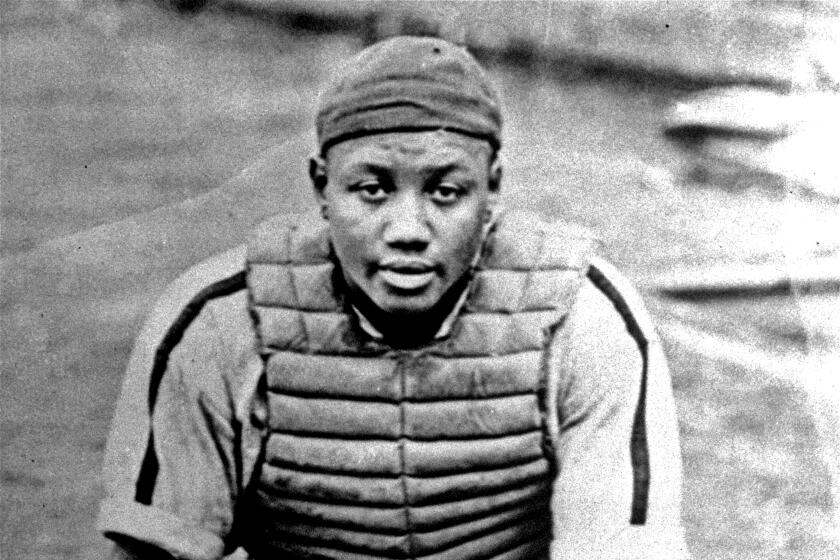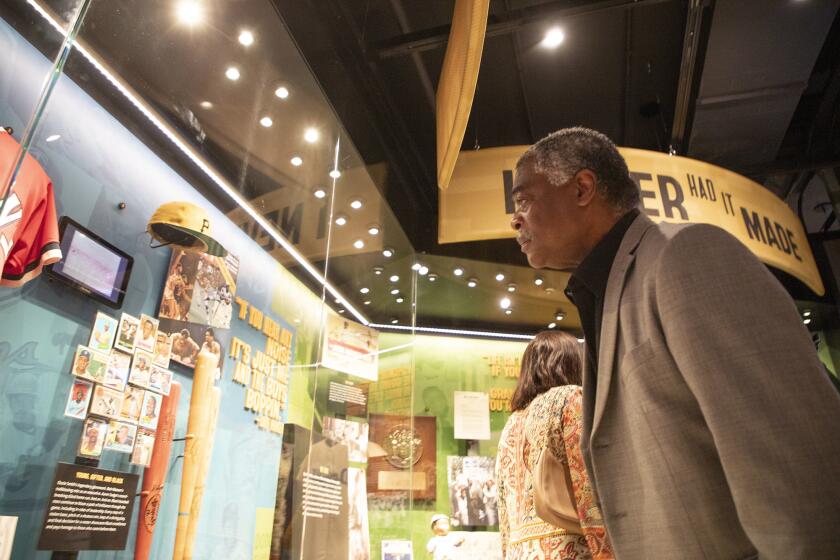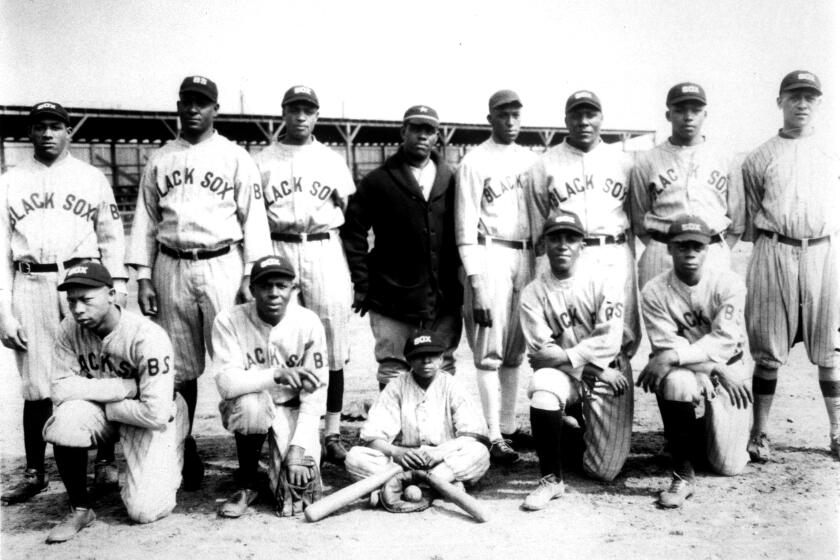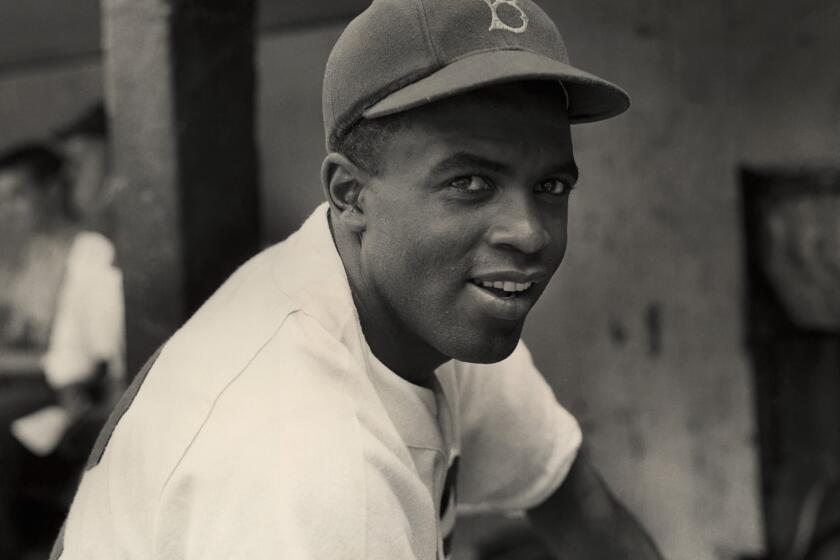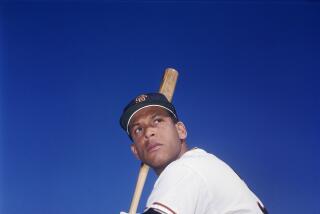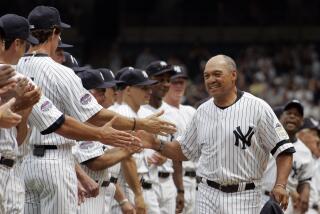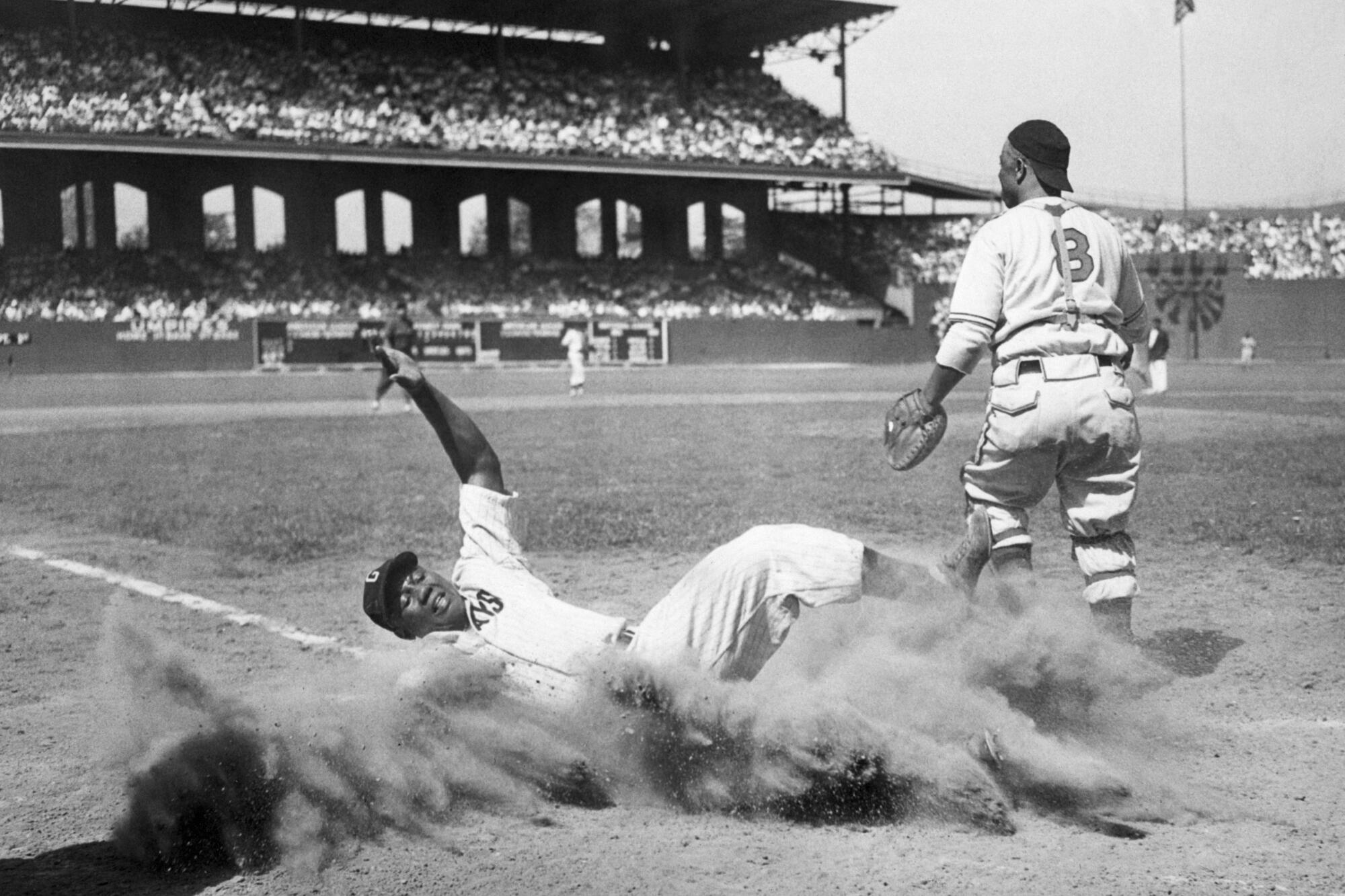
The numbers arenât complete. Too much barnstorming and too many impromptu ball games for every home run and earned run to have been documented by a box score.
But that no longer will delay the inclusion of Negro League statistics in the official records of Major League Baseball. The stats of more than 2,300 players whose careers included games from seven different Negro Leagues from 1920 to 1948 â the year after Jackie Robinson broke the color barrier by debuting with the Dodgers â were added Wednesday.
You might say that at long last the numbers were integrated.
âThis initiative is focused on ensuring that future generations of fans have access to the statistics and milestones of all those who made the Negro Leagues possible,â MLB commissioner Rob Manfred said. âTheir accomplishments on the field will be a gateway to broader learning about this triumph in American history and the path that led to Jackie Robinsonâs 1947 Dodger debut.â
Visit the stats page on mlb.com to see a new leader in career batting average (.372) and slugging percentage (.718): Josh Gibson. Ty Cobbâs .367 average is now second, as is Babe Ruthâs .690 slugging percentage.
Ted Williams and Ruth nosed out Gibson in career on-base percentage, but the legendary slugger who played for the Pittsburgh Crawfords and Homestead Grays in a 14-year career that ended in 1946 is the all-time leader in on-base-plus-slugging (OPS) at 1.177.
Major League Baseball has fixed a nagging blind spot by finally incorporating statistics from the Negro Leagues into its record books.
Gibson also now holds the highest single-season batting average. He hit .466 for the Grays in 1943, eclipsing Hugh Duffyâs .440 mark from 1894.
âNow that Josh Gibson is at the top of OPS and batting average and a few other categories, itâs great news,â Pittsburgh Pirates outfielder Andrew McCutchen said. âBut itâs more than just that and the numbers. Itâs great that you now get to learn about the players in the Negro Leagues. ... Iâll be able to do some more deep diving into some names I may not have heard of.â
The leaders of those and other rate stats â expressed with decimals â are now sprinkled with Negro League standouts. Satchel Paige, for example, now holds the third-lowest single-season earned-run average (1.01 with the 1944 Kansas City Monarchs). Outfielder Oscar Charleston is top 10 in batting average, on-base percentage, slugging percentage and OPS.
The records of counting stats such as home runs and RBIs for hitters and strikeouts and wins for pitchers arenât nearly as affected because Negro League seasons typically consisted of 60 to 80 official games. Gibson, for example, is credited by MLB as playing in only 653 games and hitting 174 home runs.
His plaque at the National Baseball Hall of Fame and Museum in Cooperstown, N.Y., however, puts his home run total as ânearly 800,â which if accurate indicates Gibson probably played in more than 2,000 games. Many were outside league play and others simply werenât documented by box scores.
The East-West Classic will highlight the launch of a Negro Leagues exhibit at the Baseball Hall of Fame and Museum with an All-Star game featuring Black players and coaches.
Although MLB teams were forbidden from playing games outside their league schedules beginning in the 1920s, the barnstorming and irregular league schedules of Negro League teams were ânot of their making but instead were born of MLBâs exclusionary practices,â said John Thorn, MLBâs official historian. âTo deny these clubs and players major league status now would be to exact a double penalty.â
Thorn chaired the Negro League Statistical Review Committee of 17 people that determined which games counted and which didnât. The committee included several recognized statistical experts, none more respected than Larry Lester, who for decades led the Negro League Research Committee for the Society for American Baseball Research (SABR).
Lester co-edited the âNegro League Bookâ in 1994 and has spent the last three decades unearthing huge amounts of data, most recently for the Seamheads Negro Leagues Database.
âStories, folklore and embellished truths have long been a staple of the Negro Leagues narrative,â Lester said. âThose storylines will always be entertaining, but now our dialogues can be quantified and qualified to support the authentic greatest of these athletes. Every fan should welcome this statistical restitution towards social reparation.â
MLBâs decision to regard the Negro Leagues as equivalent to the major leagues came during the 2020 season that was shortened to 60 regular-season games because of the pandemic. From a statistical standpoint, the condensed season provided a guide for how Negro League players would qualify for single-season and career records.
Major League Baseball announces it will recognize the Negro Leagues as a major league, with their records and statistics becoming part of MLB history.
The MLB threshold has long been 3.1 plate appearances per scheduled game to qualify for batting titles and one inning pitched per scheduled game for the earned-run average title. Those qualifying standards were used with the Negro Leagues players.
Also impacted are the career numbers of players who began their careers in the Negro Leagues before moving to MLB after Robinsonâs trailblazing integration in 1947. Roy Campanella, who won three National League MVP awards in the 1950s with the Brooklyn Dodgers, debuted in the Negro National League at age 15 and spent eight seasons primarily with the Baltimore Elite Giants before the Dodgers signed him in 1946.
Now Campanellaâs career stats include his .385 batting average in 1944 and 48 RBIs in 58 games in 1945, both of which led the Negro National League. His career batting average rose from .276 to .282 and his 167 RBIs boosted him above 1,000 â to 1,023.
Robinsonâs career hits total is boosted to 1,567 by his 49 hits for the Kansas City Monarchs in 1945 and his career batting average improves from .311 to 313. And Dodgers pitching great Don Newcombeâs victory total spiked from 149 to 153 because of his two-year stint with the Newark Eagles before signing with Brooklyn in 1946 at age 19.
âIt is really exciting,â said Cincinnati Reds pitcher Hunter Greene, a product of Sherman Oaks Notre Dame High. âIâm going to have to do a little bit more research and understand some of the history to kind of rewire my brain on some of the best players.â
MLB celebrates Jackie Robinson Day on Friday, which is the 75th anniversary of the Dodgers legend breaking baseballâs color barrier. Hereâs our coverage.
Negro League stats accumulated and published by MLB today differ slightly from those on Baseball-Reference.com, the widely recognized mother lode of statistical information. Baseball Reference conducted its own data collection, leaning heavily on the work of the Seamheads Negro League Database.
The work is not done. MLB estimates that the stats are only about 75% complete and those that have made careers out of rooting out box scores and other credible sources of information wonât stop now. Gibsonâs place in baseball history was cemented Wednesday, but it may shift still.
Seven Negro Leagues whose statistics MLB determined were major league
⢠Negro National League (I) (1920â1931)
⢠Eastern Colored League (1923â1928)
⢠American Negro League (1929)
⢠East-West League (1932)
⢠Negro Southern League (1932)
⢠Negro National League (II) (1933â1948)
⢠Negro American League (1937â1948).
Negro Leagues Statistical Review Committee (listed alphabetically)
⢠Gary Ashwill, Seamheads Negro Leagues Database
⢠Phil Dixon, baseball author and Negro Leagues Baseball Alive
⢠Jeff Fannell, Major League Baseball Players Assn.
⢠Sean Gibson, the Josh Gibson Foundation
⢠Leslie Heaphy, Kent State University and Negro Leagues author
⢠Kevin Johnson, Seamheads Negro Leagues Database
⢠Bob Kendrick, Negro Leagues Baseball Museum
⢠John Labombarda, Elias Sports Bureau, official statistician of Major League Baseball
⢠Larry Lester, baseball author/researcher and Negro Leagues expert
⢠Sonya Pankey, founder of C. Belle LLC
⢠Rob Parker, MLBBro.com
⢠Tony Reagins, Major League Baseball
⢠CC Sabathia, Major League Baseball
⢠Tom Shieber, National Baseball Hall of Fame and Museum
⢠Claire Smith, longtime baseball journalist
⢠Tom Thress, Retrosheet.org
⢠Chairperson: John Thorn, official historian of Major League Baseball
The Associated Press contributed to this report.
More to Read
Go beyond the scoreboard
Get the latest on L.A.'s teams in the daily Sports Report newsletter.
You may occasionally receive promotional content from the Los Angeles Times.
